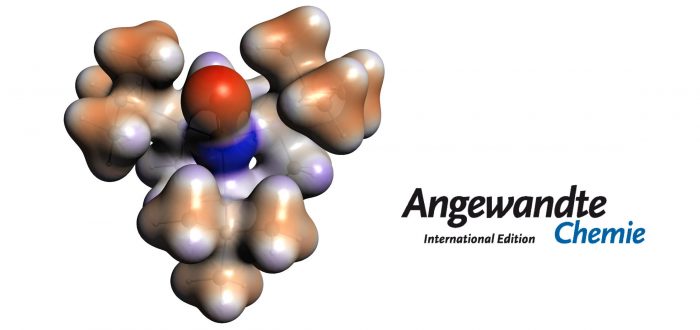High-spin (S=2) oxoiron(IV) species act as reactive intermediates in the catalytic cycle of nonheme iron oxygenases. The few available synthetic S=2 Fe(IV)=O complexes known to date are often limited to trigonal bipyramidal and very rarely to octahedral geometries. Herein, Marcel Swart and co-workers describe the generation and characterization of an S=2 pseudotetrahedral Fe(IV)=O complex 2 supported by the sterically demanding 1,4,7-tri-tert-butyl-1,4,7-triazacyclononane ligand. 2 is a very potent oxidant in hydrogen atom abstraction (HAA) reactions with large non-classical deuterium kinetic isotope effects, suggesting hydrogen tunneling contributions. For sterically encumbered substrates, direct HAA is impeded and an alternative oxidative asynchronous proton-coupled electron transfer mechanism prevails, which is unique within the nonheme oxoiron community. The high reactivity and the similar spectroscopic parameters make 2 one of the best electronic and functional models for a biological oxoiron(IV) intermediate of taurine dioxygenase (TauD-J).
The paper was recently published in Angewandte Chemie:
K. Warm, A. Paskin, U. Kuhlmann, E. Bill, M. Swart, M. Haumann, H. Dau, P. Hildebrandt, and K. Ray
“A Pseudotetrahedral Terminal Oxoiron(IV) Complex: Mechanistic Promiscuity in C-H bond Oxidation Reactions”
Angew. Chem. Int. Ed. 2020, ASAP
DOI: 10.1002/anie.202015896
Girona, December 24, 2020
For more info: gestor.iqcc@gmail.com

